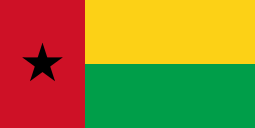PPS submachine gun
| PPS | |
|---|---|
|
PPS-43 with stock extended | |
| Type | Submachine gun |
| Place of origin | Soviet Union |
| Service history | |
| In service |
1942–1960s (USSR) 1942–present (other countries) |
| Used by | See Users |
| Wars |
World War II Korean War Vietnam War Namibian War of Independence War in Donbass Portuguese Colonial War |
| Production history | |
| Designer | I.K. Bezruchko-Vysotsky and A. I. Sudayev |
| Designed | 1942 |
| Produced | 1942–1946 (USSR) |
| No. built | ~2 million (USSR) |
| Variants | PPS-42, PPS-43, M/44, PPS wz. 1943/1952, Type 43 |
| Specifications | |
| Weight |
PPS-42: 2.95 kg (6.50 lb) PPS-43: 3.04 kg (6.7 lb) |
| Length |
PPS-42: 907 mm (35.7 in) stock extended / 641 mm (25.2 in) stock folded PPS-43: 820 mm (32.3 in) stock extended / 615 mm (24.2 in) stock folded |
| Barrel length |
PPS-42: 273 mm (10.7 in) PPS-43: 243 mm (9.6 in) |
|
| |
| Cartridge | 7.62×25mm Tokarev |
| Action | Blowback, open bolt |
| Rate of fire |
600-700 rounds/min (cyclic rate) 100 rounds/min (effective rate) |
| Muzzle velocity | Approx. 500 m/s (1,640 ft/s) |
| Effective firing range | 100 m - 150 m |
| Maximum firing range | 200 m |
| Feed system | 35-round detachable box magazine |
| Sights | Flip rear sight, fixed blade front sight |
The PPS (Russian: ППС - "Пистолет-пулемёт Судаева" or "Pistolet-pulemyot Sudayeva", in English: "Sudayev's submachine-gun") is a family of Soviet submachine guns chambered in 7.62×25mm Tokarev, developed by Alexei Sudayev as a low-cost personal defense weapon for reconnaissance units, vehicle crews and support service personnel.[1]
The PPS and its variants were used extensively by the Red Army during World War II and were later adopted by the armed forces of several countries of the former Warsaw Pact as well as its many African and Asian allies.
History
The PPS was created in response to a Red Army requirement for a compact and lightweight weapon with similar accuracy and projectile energy to the Soviet PPSh-41 submachine gun widely deployed at the time, with reduced rate of fire, produced at lower cost and requiring less manpower, particularly skilled manpower.[1]
Sudaev was ordered by the State Commission for Armaments to perfect for large-scale production the sub-machine gun design of Lieutenant I.K. Bezruchko-Vysotsky from the Dzerzhinsky Artillery Academy, who had created two prototypes in 1942; the second of these was the basis of Sudaev's gun.[2]
During design, emphasis was placed on simplifying production and eliminating most machining operations; most of the weapon's parts were sheet-steel stamped. These measures reduced the number of machined components to a bare minimum, cutting down machining time by more than half, to 2.7 hours of machining instead of 7.3 hours for the PPSh-41. There were also savings of over 50% in raw steel usage, down to 6.2 kg instead of 13.9 kg, and fewer workers were required to manufacture and assemble the parts. Thanks to the improvements in production efficiency, the Soviet planners estimated that the new gun would have allowed an increase in monthly submachine gun output from 135,000 units to 350,000 weapons.[3]
Prototypes were field tested between 26 April and 12 May 1942; the evaluation commission's report was largely favorable, but still proposed some minor improvements mostly aimed at strengthening the gun's structure.[2] By July, Shpagin had finished his own improved model (PPSh-2), and it was pitted in field trials against the PPS, which was found superior in most respects: accuracy, reliability, maneuverability.[4] (This was apparently a large scale contest, in which 20 designs participated.[5] On July 28, 1942 GAU head N.D. Yakovlev and his aide Ivan Novikov presented Sudaev's gun to the State Defense Committee for approval.[3] The firearm was accepted into service as the PPS-42 (Russian: Пистолет-пулемёт Судаева—ППС or Pistolet Pulemyot Sudayeva model of 1942).[1] The weapon was put into small-scale production during the Siege of Leningrad; mass production did not commence until early 1943 at the Sestroretsk Arsenal (over 45,000 weapons were produced before being replaced by the improved PPS-43).[1] The factory in charge for the pilot production starting in December 1942 was the Sestroretsk Tool Factory (Russian: Сестрорецкий инструментальный завод «Воскова».) The first series guns were presented for personal inspection to Andrei Zhdanov and Leonid Govorov in the same month. The full-scale production began in 1943, and the official count of PPS-42 guns produced was 46,572. Most were used during the military trials by the soldiers of the Leningrad Front.[3] The military trials officially took place between January and April 1943.[4]
Due to the massive investment already made in machinery for PPSh-41 production, which was already being produced in more than a million pieces per year, it turned out it would have been uneconomical to completely abandon its production in favor of the PPS.[4] By end of the war some two million PPS-43 submachine guns were made. Due to the oversupply of the Soviet army with submachine guns after the war, production of the PPS in the Soviet Union ceased in 1946.[5]
In the last two years of the war, Sudaev continued to experiment with improvements for his submachine gun. Six of his later prototype models, made in 1944 and 1945, are found in the Military Historical Museum of Artillery, Engineers and Signal Corps. These have variations in bolt shape and weight, as well as more obvious outward differences like a wooden, non-folding stock or a folding bayonet.[6]
The PPS remained in service with some Soviet forces until the mid-1950s. Among the last to relinquish it were crews of armored vehicles and the Naval Infantry.[4] Some World War II-era weapons found their way to the Chinese People's Liberation Army and were subsequently captured by UN forces in the Korean War.[7]
Design details

Operating mechanism
The PPS is an automatic blowback-operated weapon that fires from an open bolt.[1] The bolt is cylindrical in shape and contains a spring-loaded claw extractor, which pulls the empty case out of the chamber and passes it to the fixed ejector housed in the lower receiver. The charging handle is integral to the bolt and is located on the right side; it reciprocates during firing. Early versions of the PPS had a fixed but replaceable firing pin, held in place by the extractor spring. Pulling the trigger releases the bolt, which moves forward, stripping a round from the magazine, chambering it and striking the primer in one motion.
Features

The PPS has a trigger mechanism that allows only fully automatic fire and a manual safety that secured them against accidental discharges. When in the "safe" position (engaged by sliding a metal bar forward of the trigger guard), both the bolt and trigger are disabled.[1]
The weapon is fed from curved 35-round box magazines. They are not interchangeable with magazines used in the PPSh-41, nor can the gun use drum magazines. It is chambered for the 7.62×25mm Tokarev M1930 pistol cartridge.[1]
The submachine gun's rifled barrel (with 4 right-hand grooves) is mounted in a perforated sheet metal heat guard and is equipped with a crude muzzle brake, consisting of a strip of steel bent into a U-shape that deflects exiting muzzle gases to the sides and backwards, thus compensating for recoil.[1]
A folding stock is attached to the receiver with a spring-loaded catch button on the left side. The stock folds up and over the receiver top cover and the weapon can be fired in this arrangement. The submachine gun also has a pistol grip but was not provided with a forward grip as the magazine well was intended to fulfil this role.[1] The PPS was usually supplied with two magazine pouches, an oil bottle, bore brush and sling.
Sights
The PPS is fitted with a set of open-type iron sights consisting of a fixed front post protected from impact by two sheet metal plates and a flip rear sight with two pivoting notches, for firing at 100 and 200 m.[1]
Variants

-
 Soviet Union
Soviet Union
- PPS-42 (ППС обр.1942 г.)
- PPS-43 (ППС обр.1943 г.) Towards the middle of 1943 the modernized PPS-43 entered production; efforts were made to improve manufacturing and safety.[1] The ventilated heat shield was integrated with the upper receiver cover, both the barrel and shoulder stock were shortened, the stock's locking mechanism was simplified, the casing ejector was moved to the rear of the recoil spring guide rod, the magazine well angle was increased in the receiver in order to enhance feeding reliability and the safety was improved to block the trigger and lock the bolt in either the open or closed positions.[1]
-
 Finland M/44 submachine gun. The M/44 was a modified copy with minor differences to the original PPS-43, including a straight rather than curved box magazine. It fired the 9×19mm Parabellum pistol round and accepted the box and drum magazines designed for the Suomi M/31. It was later modified to accept the 36-round box magazine of the Carl Gustav SMG.[1]
Finland M/44 submachine gun. The M/44 was a modified copy with minor differences to the original PPS-43, including a straight rather than curved box magazine. It fired the 9×19mm Parabellum pistol round and accepted the box and drum magazines designed for the Suomi M/31. It was later modified to accept the 36-round box magazine of the Carl Gustav SMG.[1] -
 Poland Between 1952–1955, the Łucznik Arms Factory in Radom built approximately 111,000 PPS submachine guns.
Poland Between 1952–1955, the Łucznik Arms Factory in Radom built approximately 111,000 PPS submachine guns.
- PPS wz. 43, the PPS-43 which was license-produced from 1948
- PPS wz. 43/52, a modified version of the PPS-43, known as the that replaced the folding metal stock with a fixed wooden buttstock.[8] This was mounted to the receiver end plate using two inserts and the receiver take-down hook was bent downwards to accommodate the change. The buttstock has a compartment carved inside of it that contains a standard cleaning kit; the side of the butt has a sling loop. This modification was meant to increase the accuracy of the PPS submachine gun, but minimal gains in accuracy were offset by the increase in weight and size of the PPS wz. 43/52 in comparison to the original PPS-43.
- a training version built in Poland, chambered for the .22 Long Rifle rimfire cartridge (fed using standard PPS-43 magazines but modified with an aluminum reduction insert)[1]
- In 2010, Pioneer Arms, of Radom, Poland, began producing a semi-auto only version of the PPS design, called the PPS-43c. The gun, sold with its stock fixed in the closed position, is legally considered a pistol in the United States. The gun is of a closed bolt, hammer fired, blow back operated design as opposed to the open-bolt design of the PPS-43. According to a report in the July 20, 2012 edition of Shotgun News, the PPS-43C utilizes many parts from unissued PPS-43 submachine guns mounted on new PPS-43C receivers.
-
 China - Type 54, license-produced version of PPS-43[1]
China - Type 54, license-produced version of PPS-43[1] -
 Germany - In 1953, the border guards (Bundesgrenzschutz) adopted the Spanish-made DUX-53 and DUX-59 submachine guns, copied from the PPS-43 by way of the Finnish M/44.
Germany - In 1953, the border guards (Bundesgrenzschutz) adopted the Spanish-made DUX-53 and DUX-59 submachine guns, copied from the PPS-43 by way of the Finnish M/44. -
 Vietnam - K-50M also borrowed elements from the PPS design
Vietnam - K-50M also borrowed elements from the PPS design -
 Hungary in the 1950s Hungary combined basic features of the PPS-43 with the bolt safety of the PPSh-41 in the unsuccessful M53.
Hungary in the 1950s Hungary combined basic features of the PPS-43 with the bolt safety of the PPSh-41 in the unsuccessful M53.
Users
 Albania
Albania Cambodia: Used by Khmer Rouge in the Vietnam War.
Cambodia: Used by Khmer Rouge in the Vietnam War. China: Used Chinese Type 54s.
China: Used Chinese Type 54s. Cuba: Polish PPS wz. 1943/1952 used by militia.
Cuba: Polish PPS wz. 1943/1952 used by militia. Finland
Finland Guinea Bissau: Used by PAIGC in the Guinea-Bissau War of Independence
Guinea Bissau: Used by PAIGC in the Guinea-Bissau War of Independence Bulgaria
Bulgaria Indonesia
Indonesia Liberia
Liberia Mongolia
Mongolia North Korea: Used both Soviet PPS submachine guns and Chinese Type 54s.[9]
North Korea: Used both Soviet PPS submachine guns and Chinese Type 54s.[9] Poland: Used domestically produced model
Poland: Used domestically produced model São Tomé and Príncipe[10]
São Tomé and Príncipe[10] Soviet Union: Built PPS-42, and PPS-43
Soviet Union: Built PPS-42, and PPS-43-
 Sierra Leone[11]
Sierra Leone[11] -
 SWAPO: Used Polish made PPS wz. 1943/1952[12]
SWAPO: Used Polish made PPS wz. 1943/1952[12]  Thailand
Thailand-
.svg.png) Nazi Germany: used under designation Maschinenpistole 719(r)
Nazi Germany: used under designation Maschinenpistole 719(r)  North Vietnam: Used by North Vietnamese and Vietcong in the Vietnam War.[13]
North Vietnam: Used by North Vietnamese and Vietcong in the Vietnam War.[13] Ukraine: used as sidearm for several Ministry of Internal Affairs units[14]
Ukraine: used as sidearm for several Ministry of Internal Affairs units[14]
See also
References
- 1 2 3 4 5 6 7 8 9 10 11 12 13 14 15 Woźniak, Ryszard (ed.): Encyklopedia najnowszej broni palnej—tom 3 M-P, page 272. Bellona, 2001. (in Polish)
- 1 2 Юрий Александрович Нацваладзе, "ППС-43". Ружье. Оружие и амуниция, 1997/2 (Web transcriptions of the article: ) (in Russian)
- 1 2 3 Болотин, Давид (1995). История советского стрелкового оружия и патронов (in Russian). Полигон. pp. 119–120. ISBN 5-85503-072-5.
- 1 2 3 4 Сергей Монетчиков. Русские оружейники: Жизнь, оборвавшаяся на взлете "Братишка", October 2002 issue
- 1 2 Юрий Пономарёв, ППС, Kalashnikov magazine 2001/2, pp. 10-16
- ↑ Ю.А.Нацваладзе (1988) Оружие победы. Коллекция стрелкового оружия системы А.И. Судаева в собрании музея, Военно-исторического ордена Красной Звезды музея артиллерии, инженерных войск и войск связи (Military Historical Museum of Artillery, Engineers and Signal Corps), pp. 43-50
- ↑ PPS 43 submachine-gun (FIR 6123) at the Imperial War Museum
- ↑ Woźniak, 273
- ↑ https://fas.org/nuke/guide/dprk/nkor.pdf
- ↑ Jones, Richard (2009). Jane's Infantry Weapons 2009-2010. Jane's Information Group. p. 902. ISBN 0-7106-2869-2.
- ↑ https://sites.google.com/site/worldinventory/wiw_af_sierraleone
- ↑ http://www.militaryphotos.net/forums/showthread.php?144590-A-couple-of-questions-about-the-Polish-PPS-wz-1943-1952-submachine-gun
- ↑ http://www.nam-valka.cz/zbrane/pps-43.html
- ↑ Игорь Яценко. Железяку на пузяку // «Солдат удачи», № 6, 1996. стр.40-42
Bibliography
Ezell, Edward Clinton (1986). The AK47 Story: Evolution of the Kalashnikov Weapons. Harrisburg, PA: Stackpole Books. ISBN 978-0-8117-0916-3.
- Woźniak, Ryszard (2001). Encyklopedia najnowszej broni palnej—tom 3 M-P (in Polish). Warsaw, Poland: Bellona. ISBN 83-11-09149-8.
External links
| Wikimedia Commons has media related to PPS-43. |
